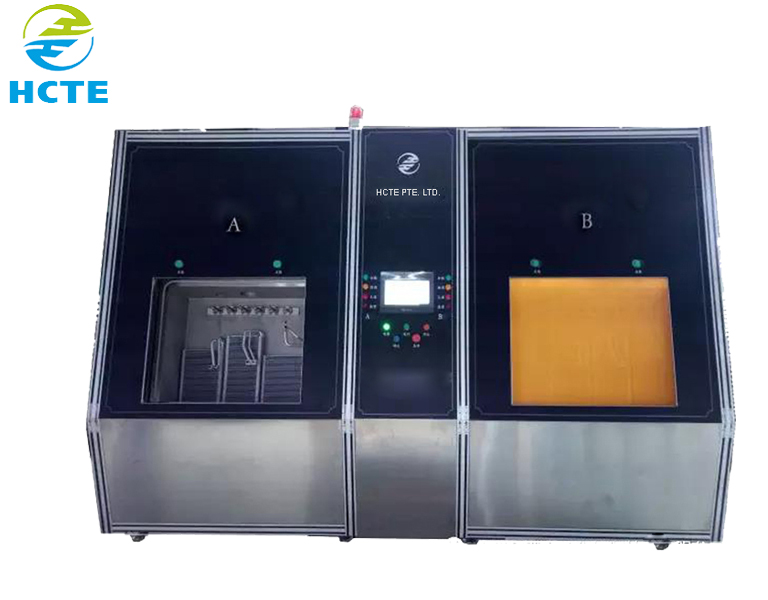Gas detection technology has a wide range of applications, in which a typical gas leak detection system is used to detect the tightness of the workpiece to be inspected. The external structure of the existing gas leak detection system includes several main components, such as an organic frame, a tracer gas source, a tracer gas inflation valve, a pressure sensor, a detection chamber, a leak detection valve, a return valve and a gas leak detector.
One of the detection methods is the chamber type gas leak detection system. The chamber type gas leak detection technology generally uses halogen gas, hydrogen or helium as the tracer gas, fills the tracer gas into the workpiece to be inspected, and uses the gas leak detector to detect the concentration of the tracer gas outside the workpiece to be inspected. If the detected tracer gas signal exceeds the set value of the gas leak detector, it indicates that the workpiece is leaking.
Chamber type gas leak detection system can be divided into vacuum chamber type gas leak detection system and atmospheric chamber type gas leak detection system. The working principle and structure of atmospheric chamber type gas leak detection system include tracer gas source, tracer gas inflation valve, detection chamber, leak detection valve, return valve and gas leak detector. The workpiece to be inspected is placed in the detection chamber, and the workpiece to be inspected is connected with the tracer gas source through the connecting pipe. During detection, after the door of the detection chamber is closed, the tracer gas inflation valve connecting the workpiece to be inspected is opened, and the tracer gas is filled into the workpiece to be inspected. The pressure sensor detects that after the inflation pressure in the workpiece to be inspected reaches a certain value, the tracer gas inflation valve is closed, and the leak detection valve and return valve are opened at the same time. If the workpiece to be inspected leaks, the gas in the workpiece to be inspected will overflow from the leak hole and enter the detection chamber under the effect of differential pressure. The gas leak detector samples from the detection chamber and judges whether the workpiece leakage exceeds the standard according to the size of the tracer gas signal obtained.
For the vacuum chamber type gas leak detection system, there is a vacuum pump and a vacuum valve connected to the detection chamber. Before the tracer gas is filled, there is no need to vacuum the detection chamber for the atmospheric chamber type gas leak detection system.
The main features of the chamber type gas leak detection system are high leak detection accuracy, fast production rhythm and simple operation.
The sampling space of the chamber type gas leak detection system is the space of the detection chamber and the relevant pipe space connected with the gas leak detector. Before the tracer gas is filled in the chamber type gas leak detection system, the gas in the clean sampling space is the reference background, and the tracer gas signal left in the sampling space after detection is called background noise. The tracer gas in the background noise may leak into the sampling space from the gas leak detection system itself, or it is the residual accumulation of the previous detection. The background noise of the tracer gas will increase with the repeated operation of the system. When the background noise exceeds a certain level, it will lead to the failure of the leak detector to operate normally, and even lead to false judgment of the detection results. The existing technology cannot effectively eliminate the residual accumulation of tracer gas, and it is usually necessary to eliminate the impact of background noise through repeated empty machine operation. The equipment operation efficiency is low, resulting in energy waste.
